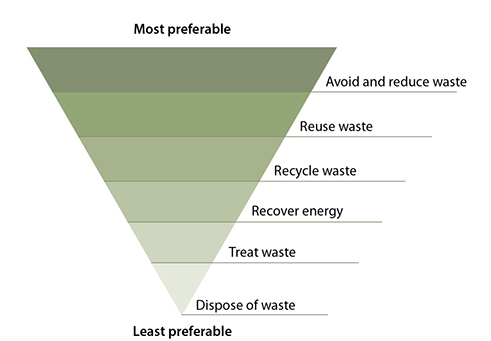2023 New Year’s Resolutions for Vets
Around this time, a lot of us like to make lists of our New Year’s resolutions – but by the end of month one, we’re already struggling to meet those goals. This could either be because we ask too much of ourselves all at once, we aim for sweeping changes that are ultimately out of our control, or we’re just not specific enough.
With 2023 now here, it’s time to set some inspiring yet realistic resolutions. These could be for your personal life, relationships or even your workplace (the focus of this article). Because the truth is, actively planning what you want out of work will make it easier to find what you need.
To get you started, here are some fun and achievable New Year’s resolutions for vet workers.
Declutter and organise your space
An organised physical and digital space is always a great resolution to start with, as a tidy space can equal a tidy mind and more room to focus on important tasks. This one is especially relevant to veterinary admins, but we think that it can apply to anyone from vets themselves to nurses, managers and beyond.
On the digital side:
- Clean out junk emails from your inbox and label important records so they’re easier to find.
- Back up documents to the cloud and delete anything that doesn’t need to be kept on your desktop.
- Uninstall unneeded software.
- Improve your Wi-Fi setup to save yourself time on slow downloads and webpages (we have a blog about that)!
In your physical workspace:
- Move excessive stationery or devices away from surfaces and into drawers where they won’t always be on display.
- Set up automated reminders for yourself via tools like Google Calendar, or for clients via systems like Panacea, and say goodbye to sticky notes around the desk.
- Scan as many paper documents as you can and store them on the cloud, then shred the physical copies.
- Make sure medications are clearly labelled and stored in a way that makes things quick and easy to find.
- The same goes for pet products; and since these may be client-facing, consider more aesthetically-pleasing organisation. For example, open shelves, large and bright labels, etc. If products are more appealing on the shelf, you may find your sales rising in turn.
- If you have multiple consultation rooms, set up your storage the same way in each one. This will help stressed vets and nurses remember where things are and save wasted time searching.
If the clinic owner agrees, it may even be time for a fresh coat of paint or an overhaul of faded furnishings to create a more welcoming and comfortable space.
Learn something new
Learning new skills in our personal lives is a common resolution for most of us, so why not do same at work?
Take time to identify where you would like to advance at your clinic or beyond, and what specific skill or qualification could help you get there. Once you’ve got the ‘what’, don’t stop! Go ahead and ask yourself these questions next:
- Why do I want to learn this skill? Pin this somewhere to keep you motivated.
- Who can help me learn this skill? And/or – what resources do I have access to?
- When can I realistically work on this skill each day? Each week?
- What accountability can I put in place to keep me focussed?
They say that it takes 10,000 hours (or about 416 days) to truly master a skill, so it stands to reason that picking up a new skill with even a moderate level of comfort should be achievable within a year. This may be especially true when you learn through any of the following:
- Classes (online or in person).
- Internships.
- Freelance or side hustles.
Even better, some clinics may be willing to invest in you and subsidise further education or arrange time off as needed, provided this is a skill that adds value to your position.
Amp up your networking
This is something that can benefit anyone no matter what your current title or career goals. Meeting other vets or professionals can be a great way to learn new skills from peers, build a bubble of support and keep an ear on the latest news for the industry.
This could look like:
- Attending networking events – search these up ahead of time and mark them on your calendar. While big gatherings are certainly not for everyone, you can at least make a goal to attend at least a certain number of these for the year and/or focus on just the smaller ones. Even just once a year can be a great way to catch up with connections.
- Updating your online presence to reflect where you are professionally and the image you want to present to the world.
- Reaching out to professionals and organising a one-on-one.
- Joining or creating local groups for online support and discussion.
There are countless ways to network, so try choosing one method that works best for you and starting there. If you find this goal is easily achievable, and it’s something you can keep on top of, then consider expanding after that.
Change your mind about something
When we really stop and think about it, a lot of us get caught up in preconceived biases and often aren’t prepared to reflect on our outlook. Being able to change your mind can lead to a more positive approach to work and ultimately life in general.
Aim to reflect on at least one major event of your week each week at a certain time (every Friday afternoon, for example) and reflect on whether your approach could have been different, what you may have learned from the experience and how you could change things going forward.
Here are some ideas for changing your thinking:
- Could you give yourself more credit for achievements, instead of beating yourself up for failures?
- Have you made a judgement about one of your colleagues that would be worth revisiting?
- Have you dismissed an opportunity that could benefit you?
- Could your standard procedures be reinvented and streamlined? Keep an eye on this space, as we publish regular articles on how Panacea can help you do just that!
A regular ‘touch base’ with yourself is invaluable, so try committing to this regularly.
Do something nice for yourself each day
Even though you may be at the clinic for long hours, it’s important to take time out of each day to take care of yourself and set up little moments that you can look forward to on stressful days.
For example:
- Make sure that you take your breaks whenever possible.
- Drink plenty of water.
- Get up and stretch your legs if you’re typically behind a desk.
- Have coffee with your favourite co-workers.
- Personalise your workspace.
Being kind to yourself is often easier said than done, so commit to the little things first and don’t let this stop when the stress piles up; that’s when it may be needed most of all.
—
What resolutions are you planning on this year? What do you think of our suggestions? Let us know!



